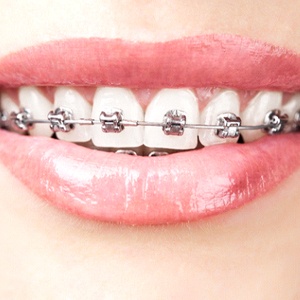Comprehensive Guide to Orthodontics Treatments for Remedying Oral Imbalances
Understanding the complexities of each treatment, including their systems, benefits, and potential disadvantages, is vital in making informed choices about one's orthodontic treatment. As we navigate through the detailed guide to orthodontic procedures for correcting dental misalignments, the detailed details of each technique will unravel, losing light on the path towards a harmonious and practical oral alignment.
Orthodontic Procedures Summary

Regular changes and tracking are important parts of orthodontic therapy to make certain development is on track and to make any kind of necessary alterations along the way. By undertaking orthodontic treatments, clients can not just achieve a straighter smile but additionally improve their total dental health and wellness and function.
Standard Braces: Just How They Work
When thinking about orthodontic therapies for dental imbalances, conventional dental braces stand out as a time-tested technique for dealing with teeth positioning. Standard braces are composed of braces, cords, and bands that work together to apply constant stress on the teeth, gradually moving them right into the preferred placement.
As stress is used to the teeth with the dental braces, the bone surrounding the teeth is improved to sustain the brand-new tooth positions. People will require normal modifications at the orthodontist's office to make certain the braces continue to apply the correct pressure for effective teeth activity.
Unseen Aligners: Cons and pros
Invisible aligners offer a hassle-free and discreet option to traditional dental braces for correcting dental imbalances. These clear, personalized trays are essentially invisible when put on, making them an attractive choice for individuals seeking a more aesthetically pleasing orthodontic treatment. One of the primary benefits of undetectable aligners is their removability, enabling for easier upkeep of oral health compared to typical braces. Individuals can get rid of the aligners before consuming or brushing their teeth, reducing the danger of food getting embeded the appliance and streamlining the cleaning procedure.

Surgical Orthodontic Options
Surgical treatments in orthodontics existing practical choices for resolving complex dental misalignments that might not be properly resolved via traditional orthodontic treatments. While conventional dental braces linked here and unseen aligners can correct many orthodontic concerns, particular cases require medical treatment to achieve optimum results. Surgical orthodontic alternatives are commonly suggested for extreme malocclusions, considerable jaw discrepancies, and instances where the underlying bone structure requires modification to achieve appropriate positioning.
One common surgical orthodontic procedure is orthognathic surgery, which involves rearranging the jaws to fix useful concerns such as problem eating or talking. This surgical procedure is usually carried out in collaboration with an orthodontist who assists line up the teeth prior to and after the procedure. Surgical orthodontics may additionally include treatments to reveal impacted teeth, get rid of excess gum tissue, or improve the jawbone to create a more harmonious face account.
Before thinking about medical orthodontic options, individuals go through a thorough analysis to figure out the need and potential benefits of such treatments. cumming braces. While surgical treatment may seem daunting, it can considerably enhance both the function and aesthetics of the smile in situations where traditional orthodontic treatments fail
Retainers and Post-Treatment Care

Post-treatment treatment includes complying with the orthodontist's guidelines faithfully. This may include correct oral hygiene techniques, going to follow-up visits, and wearing the retainers as suggested. Failing to adhere to post-treatment care instructions can result in regression, where the teeth gradually move back towards their original positions. Consistent retainer wear, good oral hygiene, and normal dental examinations are these details essential for preserving the outcomes achieved through orthodontic surgery and guaranteeing the long-term security of the dealt with dental placement.
Verdict
In conclusion, orthodontic treatments provide numerous options for remedying oral misalignments. Surgical orthodontic options are available for extra serious misalignments. Generally, orthodontic procedures can efficiently improve oral wellness and visual appearance.
As we browse with the detailed guide to orthodontic treatments for remedying oral imbalances, the complex details of each technique will certainly unravel, shedding light on the course towards a functional and unified dental positioning. - invisalign
One of the most common orthodontic therapies is the usage of braces, which consist of steel braces and cords that apply mild pressure to slowly move teeth into the preferred position.When considering orthodontic treatments for oral misalignments, conventional dental braces stand out as a tried and true method for remedying teeth placing. Furthermore, unseen aligners may not be suitable for complicated orthodontic issues that require more considerable teeth movement, as they are typically recommended for moderate to modest cases. Retainers are custom-made orthodontic devices created to hold teeth in their fixed settings after the conclusion of orthodontic therapy.
Comments on “Specialist Cumming Braces and Aligners: What to Know Prior To You Go to”